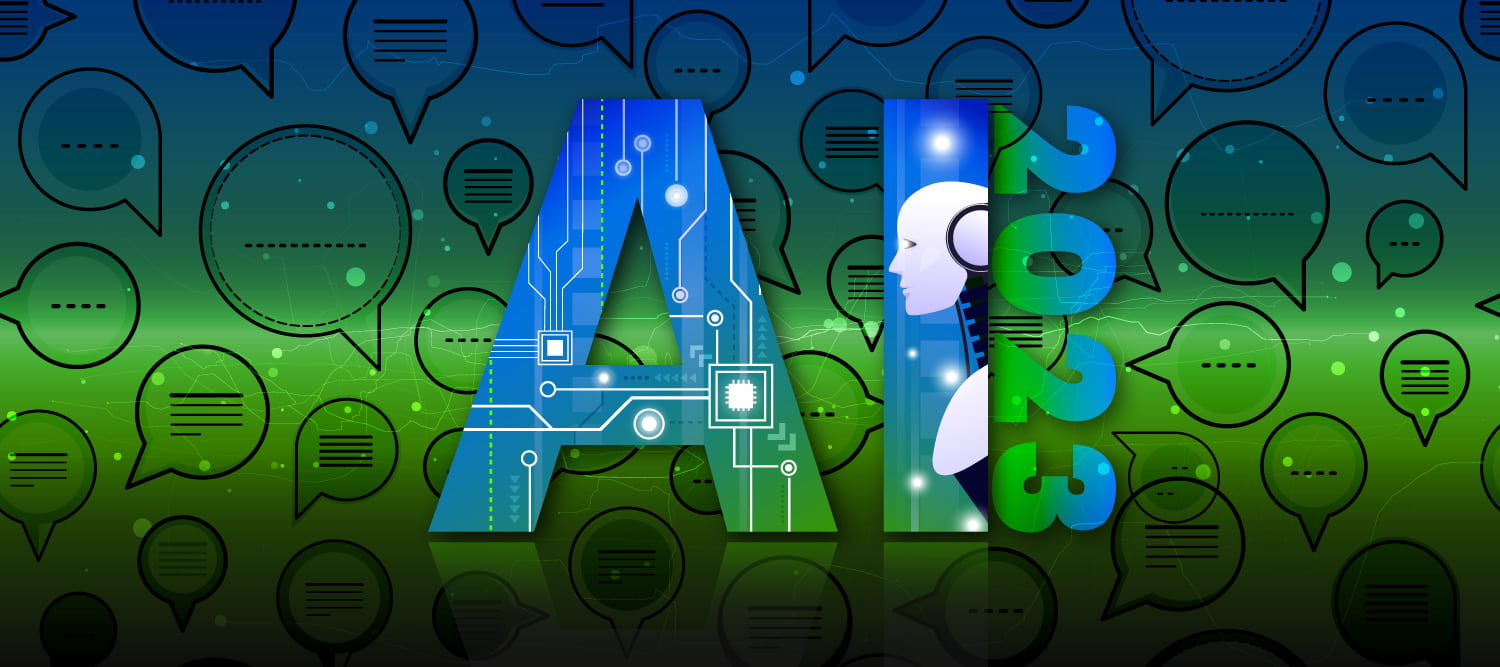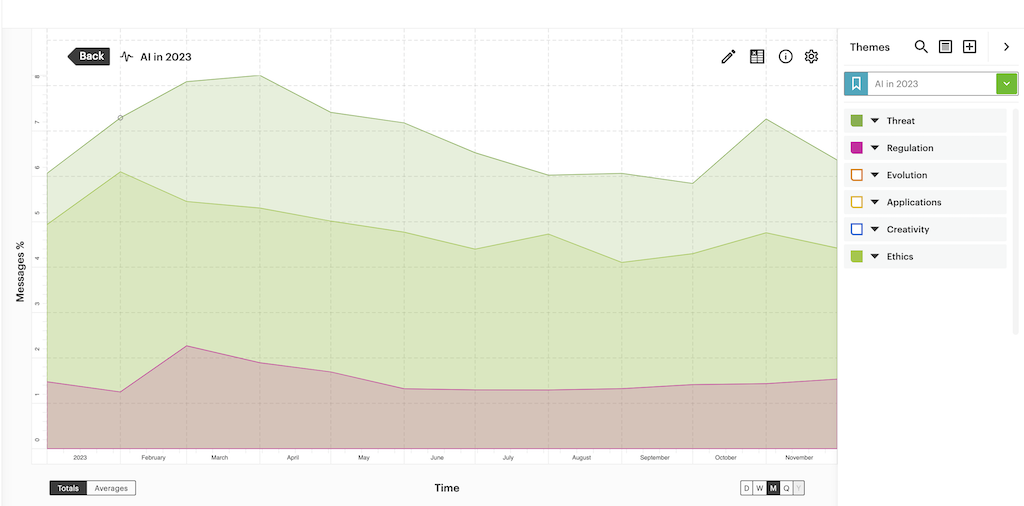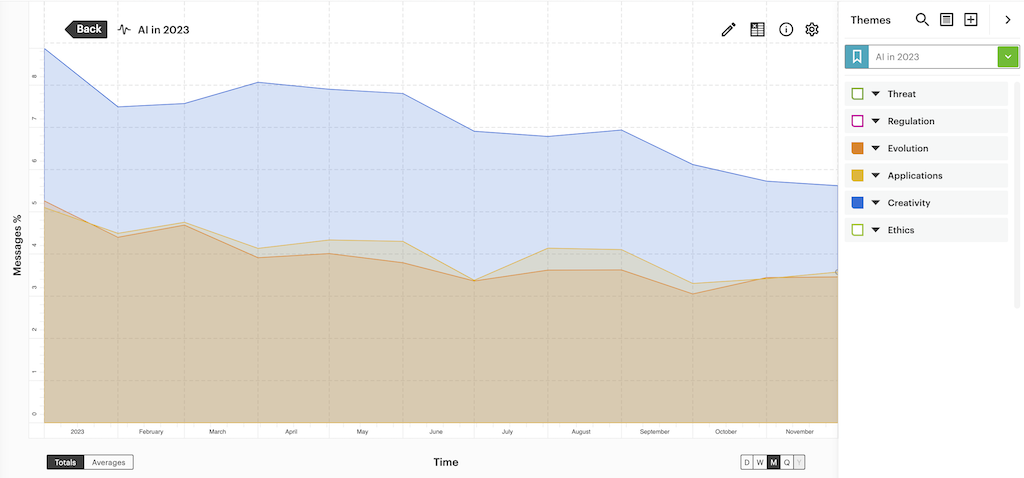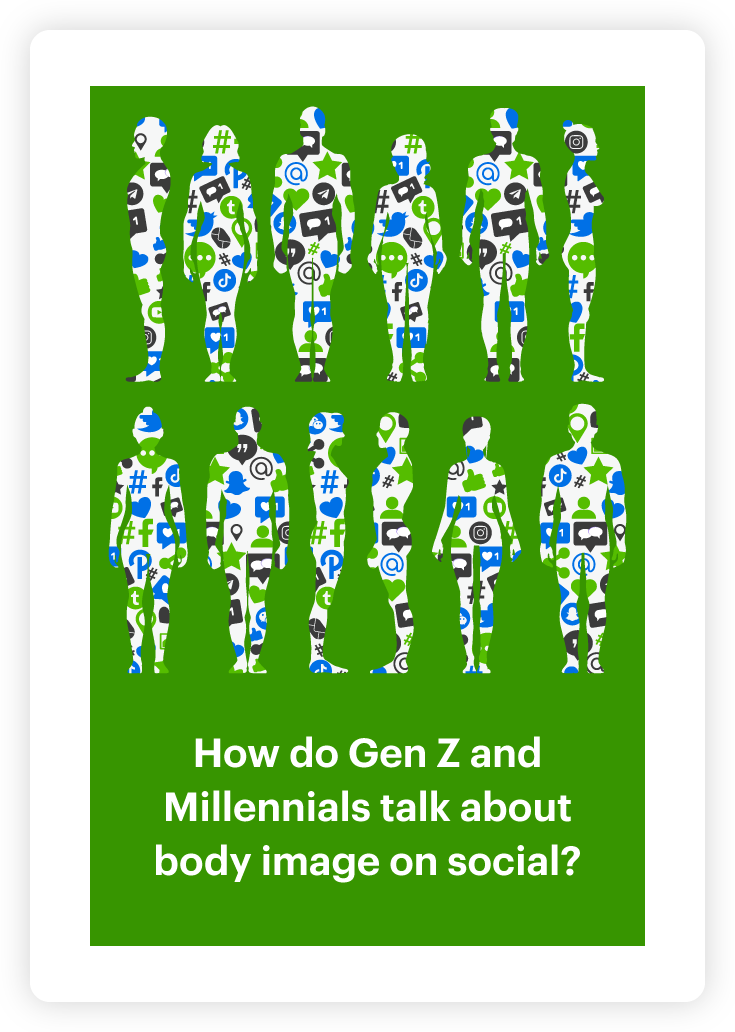Tracking discussions surrounding 2023’s big AI trends



2023 was the year of artificial intelligence. ChatGPT’s launch in late 2022 was the breakthrough moment for AI within public consciousness. This momentum created a huge focus upon this emerging technology in 2023, with AI trends a focal point of online discussions.
However, with great hype comes a great amount of noise. Trying to discern key AI trends within this continuous cacophony is almost impossible without, ironically, AI-powered technology for assistance.
Enter Relative Insight’s text analysis platform. To understand the key themes driving online discussion around AI, we first used a social listening tool to gather over three million posts on the topic. Using two features within our software – Explore and Heartbeat – we deconstructed this mass of messages to discern what elements of artificial intelligence captured the public’s imagination.
Within minutes, we identified the key themes permeating through conversations, tracked how they had changed over the course of year, and pinpointed the relationship between them.
Step 1 — Identifying AI trends using Explore
How to go about discerning themes from unstructured text data? While a word cloud seems like an obvious solution, in reality you’d garner minimal insight. It would highlight that ‘artificial’, ‘intelligence’ and ‘AI’ were the most commonly used words in conversations about AI.
This is where Relative Insight’s comparative methodology comes to the fore. Comparing text data sets eliminates commonalities and quantifies only what is different. This enables you to understand differences over time, by demographic segment, by geography etc.
With 2023 AI discussions, we compared conversations month on month to ascertain trending topics throughout the year. Doing so highlighted six discussion areas on the subject — broadly encompassing the opportunities of AI and the challenges of AI.
Within Explore, we were able to combine topics and words related to these areas of discussions into comprehensive themes. For example, a recurring discussion point surrounded the dangers of AI. We were able to combine topics relating to ‘danger’, ‘safety’, ‘damage’ and even ‘death’ into one theme, labeled ‘threat’.
Converting multiple words and topics into distinct themes enabled us to track AI trends using Heartbeat. This tool visualizes how themes change over time, as well as the relationship between each theme.
Step 2 — Using Heartbeat to track themes in AI conversations
Firstly, we used Heartbeat to track the three themes relating to challenges posed by AI. These were labeled ‘threat’, ‘ethics’ and ‘regulation’.
While ‘threat’ featured topics related to the danger of AI, ‘ethics’ incorporated topics and words relating to the misuse of, and approach towards, the technology. As well as words associated with ‘ethics’, it also included the topic of ‘caution’ and words like ‘deepfake’ and ‘biased’.
‘Regulation’ featured the topic of ‘prohibition’, made of up words including ‘banned’ and ‘outlawed’. It also included words such as ‘law’, ‘regulation’, ‘pause’ and ‘legislation’.


By plotting each theme on a Heartbeat chart, it’s clear that all three spiked in the first quarter of the year, when people were still uncertain about the short-term impact of AI. However, while all three fell after this initial spike, only conversations about ‘threat’ and ‘ethics’ began to rise at the end of the year. This is despite the European Union introducing its AI Act, the first form of regulation specifically targeted at artificial intelligence.
Additionally, across 2023 people were much more likely to reference threat and ethics rather than regulation. It will be interesting to monitor whether this AI trend continues as governments implement laws surrounding the technology.
How AI helps humans
Discussion areas relating to AI learning and opportunities also comprised of three clear themes. The first related to ‘evolution’; with online audiences using words like ‘learn’, ‘trained’ and ‘improve’ while discussing how AI was evolving.
The theme of ‘creativity’ features areas like ‘art’, ‘music’ and ‘writing’ that AI has increasingly contributed to throughout 2023. The final theme of ‘applications’ relates to more business-orientated uses, and includes words like ‘tools’ and ‘automation’.


As with challenge-related themes, these three discussion areas trend down, with their highest prevalence at the start of 2023. This suggests that conversations around AI trends are becoming more fragmented.
The Heartbeat chart visualizes a very close relationship between conversations around AI as a business tool and how the technology’s evolution. However, it’s clear that AI’s ability to produce what would typically be considered to be ‘human’ outputs is what dominates online audiences’ discussions.
Using text analytics to track themes over time
Our analysis of AI trends indicates that, while conversation topics appear to be fragmenting over time, the threat the technology proposes and its ability to produce create outputs were the most dominant features in AI discussions through 2023.
Whether these trends will continue to dominate in 2024, or if the growth of other topics gives rise to new prevailing themes among AI conversations, remains to be seen.
In this example, Relative Insight used a combination of text data comparison and visualization to identify the key aspects of AI discussions. However, you can apply this text analysis technology to any data type that fluctuates over time — including survey responses, reviews or even CX transcripts.
Want to try it for yourself? Sign up for a free trial now and learn how you can use AI-powered text analytics to derive business intelligence from text data.
